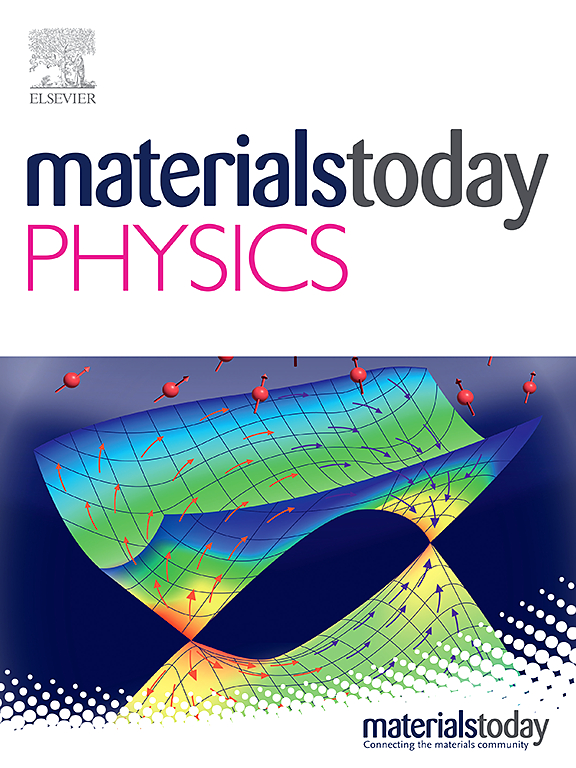基于Bi2Te3 p-n同质结的高性能自供电紫外-近红外成像光电探测器
IF 9.7
2区 材料科学
Q1 MATERIALS SCIENCE, MULTIDISCIPLINARY
引用次数: 0
摘要
二维Bi2Te3是一种新兴的半导体材料,在下一代光电器件的开发中具有相当大的应用前景。特别是,宽带光探测在包括多光谱成像和认知在内的各种应用中至关重要。因此,调整半导体的物理性质,从而建立一个高效的p-n同质结对于实现高性能的光探测装置是重要的。然而,到目前为止,构建bi2te3p -n同质结仍然很困难。本研究通过化学气相沉积法合成了sb掺杂的Bi2Te3,该材料具有典型的p型导电行为和可观的空穴迁移率,为1.6 cm2 V−1 s−1。得益于内置电场,Bi2Te3 p-n同质结显示出明显的整流效果和极低的暗电流,约为10-14 A。在光照下,p-n同质结作为光电二极管,实现了高达4.65%的功率转换效率和802.9 a /W的优异响应度。此外,利用内置电场,p-n同质结在367至1550 nm范围内表现出宽带自驾驶光探测,具有超高的探测率(3.84×1013 Jones在520 nm和8.82×1011 Jones在1550 nm)。这项工作为合成p型Bi2Te3提供了一种有效的策略,并强调了同质结在高性能宽带光电探测器中的关键作用。本文章由计算机程序翻译,如有差异,请以英文原文为准。

High-performance self-powered UV-to-NIR imaging photodetector based on Bi2Te3 p-n homojunction
2D Bi2Te3 is an emerging semiconducting materials show considerable promise for application in the development of next-generation optoelectronic devices. Especially, broadband photodetection is crucial in various applications, including multispectral imaging and cognition. Therefore, tuning the physical properties of semiconductors and thereby building an efficient p-n homojunction are important for achieving a high-performance photodetection device. However, until now, it is still difficult to construct Bi2Te3 p-n homojunction. In this work, Sb-doped Bi2Te3 was synthesized via chemical vapor deposition, which exhibited typical p-type conduction behavior and a considerable hole mobility of 1.6 cm2 V−1 s−1. Benefiting from the built-in electric field, the Bi2Te3 p-n homojunction displays an apparent rectification effect and an extremely low dark current of approximately 10−14 A. Under illumination, the p-n homojunction, serving as a photodiode, achieved a high power conversion efficiency of 4.65 % and an excellent responsivity of 802.9 A/W. Furthermore, taking advantage of the built-in electric field, the p-n homojunction exhibited broadband self-driving photodetection from 367 to 1550 nm with ultra-high detectivity (3.84 × 1013 Jones at 520 nm and 8.82 × 1011 Jones at 1550 nm). This work provides an effective strategy for synthesizing p-type Bi2Te3 and emphasizes the pivotal role of homojunctions for high-performance broadband photodetectors.
求助全文
通过发布文献求助,成功后即可免费获取论文全文。
去求助
来源期刊

Materials Today Physics
Materials Science-General Materials Science
CiteScore
14.00
自引率
7.80%
发文量
284
审稿时长
15 days
期刊介绍:
Materials Today Physics is a multi-disciplinary journal focused on the physics of materials, encompassing both the physical properties and materials synthesis. Operating at the interface of physics and materials science, this journal covers one of the largest and most dynamic fields within physical science. The forefront research in materials physics is driving advancements in new materials, uncovering new physics, and fostering novel applications at an unprecedented pace.
 求助内容:
求助内容: 应助结果提醒方式:
应助结果提醒方式:


